One of the best handsets of last year was the HTC One M8, which continued to win awards for several months after launch. Offering an impressive experience, it packed a specs list that was market leading. Twelve months on, HTC's new flagship has arrived.
Reinventing a successful product is certainly not easy and the challenge facing HTC was delivering an improved handset without changing the best parts of the One M8. The result is a handset that tweaks and improves some of the small faults in the One M8 while remaining decidedly familiar.
Whilst HTC has made the M9 an evolutionary flagship, chief rival Samsung has revolutionized the Galaxy S range. HTC has some serious competition for the plaudits this year, so is the One M9 up to the mark?

Video Review
If you want to see the HTC One M9 in action and a summary of our entire review inside six minutes, check out our video review of the One M9 below. For a more in-depth look, do read on and check out the full review.
Specifications
The HTC One M9, like most flagship handsets, is packed with the latest premium specifications to provide the best possible experience. The key specs of the HTC One M9 include:
- Dimensions: 144.6 x 69.7 x 9.6mm
- Weight: 157 grams
- Screen: 5.0-inch Super LCD3, Full HD 1080p resolution (~441ppi pixel density)
- OS: Android 5.0 Lollipop, HTC Sense UI 7.0
- CPU: Qualcomm Snapdragon 810 (64-bit), octa-core (4 x 2GHz, 4 x 1.5GHz)
- Memory: 3GB RAM, 32GB interal storage, microSD expansion (up to 128GB)
- Camera: 20.7MP, dual-LED flash, autofocus, HDR, Panorama
- Video: 2160p (Ultra HD) @30fps, 1080p@60fps, 720@120fps, HDR
- Front Camera: 4MP UltraPixel, 1080p@30fps, 1.9µm pixel size, HDR
- Connectivity: Bluetooth v4.1, Wi-Fi n/ac, NFC, IR blaster, LTE Cat 6 (300Mbps down, 50Mbps up)
- Battery: 2840 mAh non-removable
- Other: Corning Gorilla Glass 4, Quick Charge 2.0 (60% charge in 30 mins),

Design
The One M9 looks very much a part of HTC's One range with the 5 inch Full HD display flanked by the dual BoomSound speakers. The display itself is of the LCD3 variety and offers deep blacks and vibrant colors although it is arguably inferior to some AMOLED screens.
The positioning of the two BoomSound speakers ensures that the One M9 continues HTC's pedigree of excellent sound. The speakers are loud and overall impressive, although there was a slight hiss in the mid-tones. Above the display is HTC’s 4MP UltraPixel front facing camera, which was previously used as the rear camera on the One M8 and the One M7.

Like the One M8, the One M9 is crafted from a single sheet of aluminium and features a two tone finish with gorgeous design. The One M9 is both thicker and heavier than the One M8 but this extra size makes the handset more comfortable in the hand.
On the right, HTC has put the MicroSD card tray, volume keys and power button. With the M9, HTC ha listened to customer feedback about the power button placement at the top of the M8 and the new power button placement is natural and much easier to use.

On the left of the M9 is the SIM card tray. Like most current flagship devices, the One M9 uses a Nano SIM and during four weeks with the M9, I found little cause for concern around the network antennae and performance.
On the back of the One M9 is the biggest change relative to the One M8: the 20 megapixel camera. The main complaint with the One M8 was the UltraPixel camera which offered too little in the way of resolution to work with and the new 20MP sensor from Toshiba aims to fix this.

The back of the One M9 also has the two tone metal finish. We've got the Gunmetal gray version here which has a darker and lighter gray finish on the rear and the effect when moved under light is quite striking.
The HTC One range has always featured stylish metal-clad smartphones and the One M9 is no different. However, hardware and design is only one part of the story so how does the rest of the M9 stack up?

Software
The One M9 comes with Android Lollipop out of the box with HTC's Sense 7 user interface on top. HTC Sense is one of the most mature interfaces on the market and instead of completely revamping the experience, HTC have tweaked the software with some welcome changes and improvements.
Take a closer look at what's new and improved in our HTC Sense 7 video review.
Sense 7 continues a long trend of advanced yet simple interfaces from HTC. Whilst Sense 6 was in need of tweaking in a few areas, Sense 7 on the One M9 is polished and optimized to offer the best possible experience.
Performance
The HTC One M9 is the first smartphone to be powered by Qualcomm’s new Snapdragon 810 processor and prior to the launch of the handset, there were rumours that Qualcomm were struggling to stop the Snapdragon 810 from overheating. Being made from metal, an overheating processor would be very apparent on the One M9, though from my time with it, I can say that the overheating reports are somewhat unfounded.

The reports initially suggested that the processor overheated even when performing the smallest of tasks but thankfully, it seems that Qualcomm and/or HTC fixed these issues prior to the launch of the One M9. Now to the bad news – the handset does run hot, albeit usually when performing resource intensive tasks. Whether it’s playing a graphic-heavy game or running lots of apps in the background, you can definitely feel when the phone is running hot. All smartphones heat up to a certain extent and the One M9 does not heat up to the point where it is dangerous and too hot to use.
Aside from the cooling issues, the rest of the One M9 performance cannot be faulted. The 64-bit octa-core chipset has four 2.0GHz Cortex-A53 processors and four 1.5GHz Cortex-A53 processors in the big.LITTLE formation and is indicative of a wider industry trend. The setup provides fast performance even after you load apps and services onto the handset.t One thing I did notice however, was that the One M9 can slow down a little if you have a microSD card filled with lots of content. As a point of reference, I noticed this after adding a microSD card with over 45GB worth of content (it was a 64GB card) so it’s unlikely most people will be affected.


Naturally we put the HTC One M9 through some performance benchmarks to test just how good the performance is. In the AnTuTu benchmark – which tests the CPU, RAM and Graphics – the One M9 achieved a score of 53037, which beat the Meizu MX4, Galaxy Note 4 and last yeas’ flagship, the One M8.


Moving onto 3DMark - which puts the graphical capabilities of the handset to the test - the One M9 achieved a score of 22177. The score is quite interesting as according to the benchmark service, this outranks both of Samsung’s new flagship devices - the Galaxy S6 and the Galaxy S6 Edge – but is beaten by the LG G Flex 2 and Motorola Nexus 6.



Another popular benchmarking service to test a handset with is Geekbench, which tests both, an individual core and all the cores, of the smartphone’s processor. In this test, the HTC One M9 scored 1122 in the single-core test and 3716 in the multi-core test.
The single-core score beats the Galaxy Note Edge and Nexus 6 but is beaten by the Galaxy S6 Edge, iPhone 6 and iPhone 6 Plus. The multi-core score is higher than the Nexus 6 and Galaxy Note 4 (Snapdragon) but is beaten by the Galaxy Note 4 (Exynos) and the Galaxy S6 Edge.

Last up in our testing is Quadrant Advanced, one of the best known benchmarking applications available. In this test, the HTC One M9 scored 32759, which beats the Galaxy Note 4 (both versions), HTC One M8 and LG G3 but is beaten by the Galaxy S6 Edge.
As has been previously revealed, smartphone manufacturers do often boost the performance of the handset when they recognize a benchmark is being run so the results of benchmark tests may not be completely accurate. However, the conclusions we can draw from the tests is that HTC’s new flagship definitely ranks highly in the performance stakes and aside from a little lag when running resource intesive tasks, it should be a relatively smooth experience for most users.
Camera

The biggest difference between the HTC One M8 and the One M9 is the camera; the UltraPixel rear camera on the One M8 makes its way to the front of the One M9 while on the rear, HTC’s latest flagship has a 20.7MP Toshiba sensor. Past devices in the HTC One range have always struggled with camera performance but is the new sensor on the One M9 any better?
Here are a couple daylight camera samples I captured on the HTC One M9:


Here are an overcast camera sample I captured on the HTC One M9:

The One M9 seems to cope well with overall colour reproduction but the biggest issue seems to be handling light flares. In optimum conditions, the camera is able of capturing great-looking images but in sunlight or under artificial lighting (such as a lightbulb or street lamp), the lens flare results in washed out and sometimes, unusable photos.
The front facing camera uses the same UltraPixel sensor that HTC has used for the past few years and as a selfie camera, it’s actually very good. The key criticism of the UltraPixel camera is that it doesn’t provide enough detail for post-processing and editing but selfies are usually shared on lossy social media formats so the UltraPixel camera does the job.
Here are a couple of selfies I took with the UltraPixel:


Here's a panorama captured with the One M9:

You can see many more images captured from the HTC One M9 in the gallery below.
The other key change with the introduction of the 20MP sensor is that the HTC One M9 shoots Ultra HD video (2160p) at 30 frames per second. Unfortunately, the one thing HTC have removed from the One M9 is Optical Image Stabilization (OIS) and the lack of OIS means there’s very little to stop your videos from coming out shaky.
Here’s a 4k video sample captured on the HTC One M9:
Overall, while the HTC One M9 camera is definitely an improvement over last year's One M8, it still falls short of the standards expected from a flagship £500+ smartphone. It does capture great images if the lighting is right but, as this rarely happens, you’re likely to be left with photos that capture a scene without any sparkle.
Battery Life
Inside the 9.6mm-thick metal unibody, HTC have managed to include a 2840 mAh battery which is larger than both the Galaxy S6 and the Galaxy S6 Edge. HTC claim that the One M9 battery offers up to 25 hours talktime and up to 400 hours standby but as we all know, these figures are rarely attained outside of laboratory conditions. So how long do the HTC One M9 battery really last?
Over the course of three weeks, it became clear that the HTC One M9 battery will easily last a full day with moderate to heavy usage (including GPS, gaming and video streaming at around 55-70% brightness).

The standby time of the HTC One M9 is actually very impressive as, even with Wi-Fi and Bluetooth turned on, push notifications turned on and all services syncing, it managed to last over two and a half days. This could be really useful if you’re going camping for the weekend and only need your phone for emergencies. The non-power saving mode should comfortably last you a few days with moderate to light usage and if you need to, the power saving and ultra power saving modes could extend this further.
The battery life of the HTC One M9 is exactly what we’d expect from a flagship smartphone; the ability to power most users through the day and the ability to last an entire weekend or more with little usage. The addition of Quick Charge 2.0 enables fast charging of the battery and while HTC claims you can gain up to 60% battery with just 30 minutes of charging, I found this was closer to 50% (still a very quick charge).
Conclusion
The HTC One M9 is a curious smartphone; on the one hand, HTC have stuck to the design they know that’s been very well received and updated it with the latest specs but on the other hand, HTC have kept to the same design without really innovating further.

The past two HTC One flagships – the One M7 and One M8 – both offered designs that were considered cutting edge for the time but since the One M8, the industry has moved on. Manufacturers are back to making handsets as thin as possible while also trying to innovate and it feels that HTC is being left behind.
Looking at the competition, the HTC One M9 doesn’t look as appealing as the Galaxy S6 or Galaxy S6 Edge, which are much thinner with better performance, displays and design. And this is HTC’s key problem: the company is trying to reclaim its mobile market share, but while chief rival Samsung has moved on drastically, HTC simply hasn’t.
That being said, the HTC One M9 is still a very impressive smartphone. Like most devices, there are things that could do with a tweak or two but the performance, design and build are definitely impressive.

The key problem is – I don’t know if this is enough for HTC to reclaim its market share. Without doubt, the One M9 will appeal to anyone who loves a HTC handset but at a price point of $749 (£579), it’s just $80 cheaper than the entry level Galaxy S6 (32GB storage) which offers a much better overall package.
Would I buy the HTC One M9? Yes and no: I would buy one just for HTC Sense and the hardware but I wouldn’t buy one if I needed a great smartphone camera or wanted the latest cutting edge smartphone.
Special thanks to Three UK for lending us the HTC One M9 for this review. Check out their Feel At Home free roaming service!








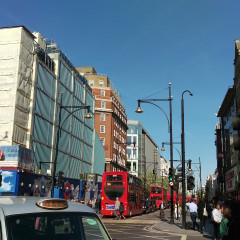
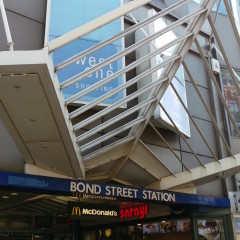

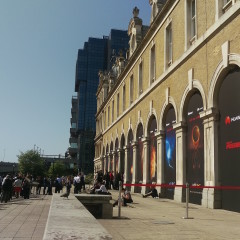


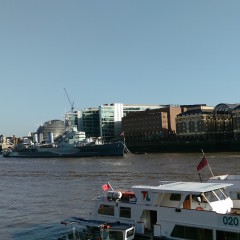

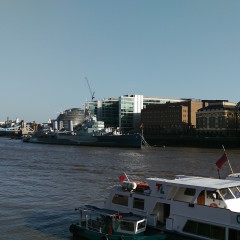
















10 Comments - Add comment